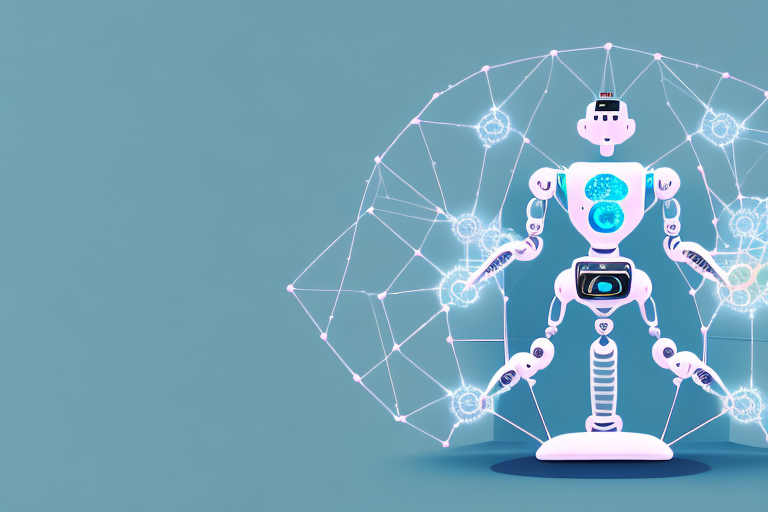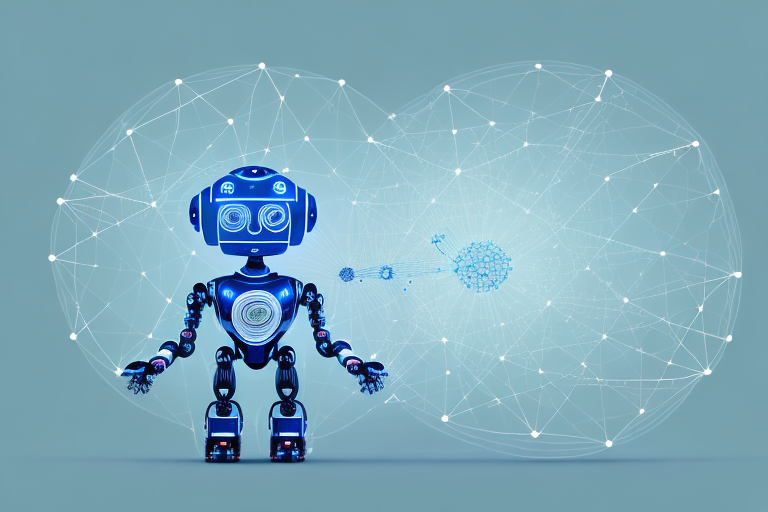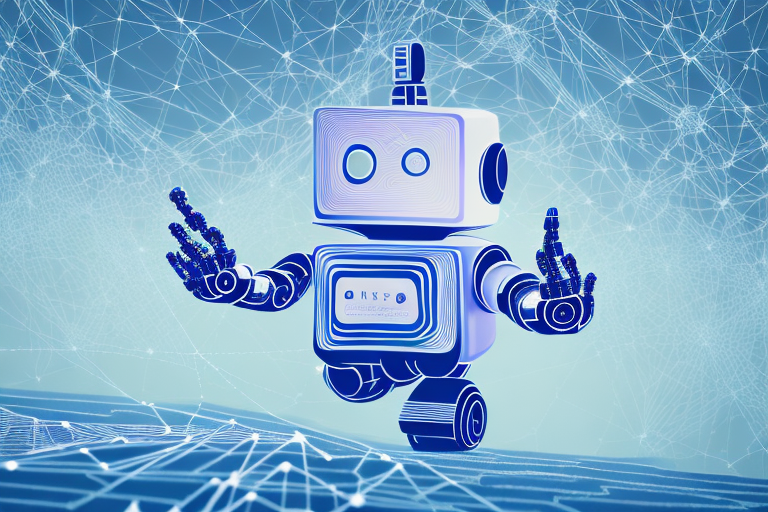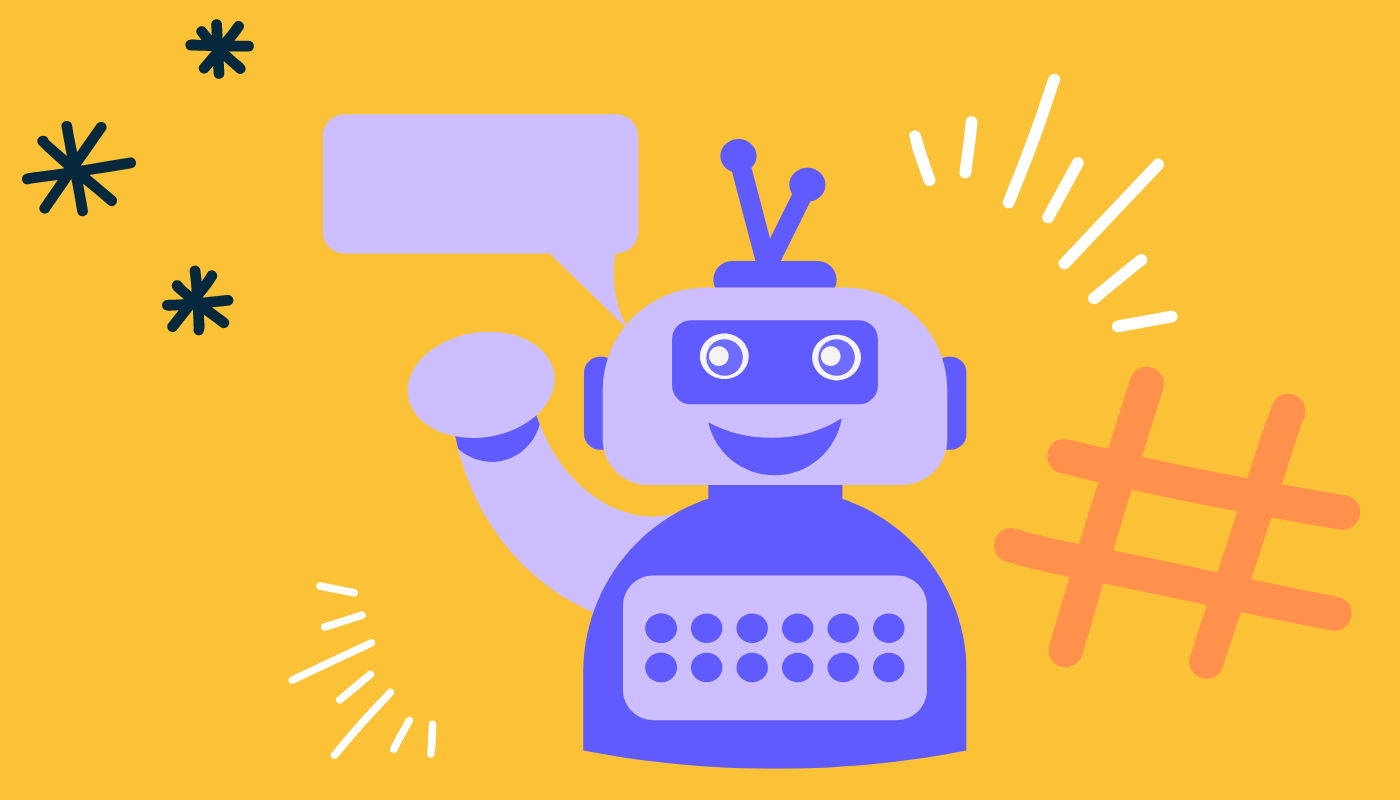Welcome to the world of AI chatbots! These digital assistants have become increasingly popular over the years, thanks to their ability to converse with users in a human-like manner. In this article, we’ll be taking a closer look at how AI chatbots work and the different components that make up these digital assistants.
Understanding AI Chatbots
Before diving into the technical details, we’ll first define what an AI chatbot is and how it has evolved.

AI chatbots have become increasingly popular in recent years due to their ability to provide quick and efficient customer service. They are used by businesses of all sizes to handle customer inquiries, provide product recommendations, and even process orders.
What is an AI Chatbot?
An AI chatbot is a software program that uses artificial intelligence to communicate with humans via text or voice. It is designed to simulate human-like conversation and provide assistance in various tasks.
One of the key features of an AI chatbot is its ability to learn and improve over time. As it interacts with more customers, it becomes better at understanding their needs and providing relevant solutions.
The Evolution of Chatbots
Chatbots have been around for decades, but it’s only in recent years that technology has advanced significantly. From simple rule-based programs to sophisticated machine learning algorithms, chatbots today have become more intelligent and capable of handling complex tasks.
Early chatbots were limited in their capabilities and often struggled to understand natural language. However, with the advent of machine learning and natural language processing, chatbots have become much more sophisticated.

Today’s chatbots can understand context, recognize patterns in data, and even detect emotions in customers’ messages. This has made them invaluable tools for businesses looking to improve their customer service and streamline their operations.
Key Components of AI Chatbots
AI chatbots are becoming increasingly popular in today’s digital age. They are used by businesses and individuals alike to provide customer service, answer questions, and even entertain users. These chatbots are made up of several components that work together seamlessly to provide a satisfying user experience. Let’s take a closer look at these components.
Natural Language Processing (NLP)
NLP is a key component of AI chatbots that enables them to interpret and understand human language. It involves a complex set of algorithms that analyze the structure, context, and meaning of user input. This means that chatbots can understand and respond to natural language queries, making them more user-friendly and accessible.

For example, if a user asks a chatbot “What is the weather like today?”, the NLP component of the chatbot will analyze the input, understand the user’s intent, and respond with an appropriate answer based on the user’s location.
Machine Learning Algorithms
Machine learning algorithms are used to train chatbots to recognize patterns in user input and respond appropriately. These algorithms use statistical models to improve their accuracy over time. This means that the more a chatbot is used, the better it becomes at understanding and responding to user queries.
For example, if a chatbot is used to answer customer service queries, machine learning algorithms will analyze the types of questions being asked and the responses given. Over time, the chatbot will become better at recognizing patterns in the questions and providing accurate and helpful responses.
Conversational User Interfaces
Conversational user interfaces, or CUIs, are designed to provide a natural and intuitive way for users to interact with chatbots. They often involve the use of text, voice, or both. CUIs are designed to mimic human conversation, making them more engaging and user-friendly.
For example, a chatbot with a text-based CUI might use emojis or GIFs to add personality and humor to its responses. A chatbot with a voice-based CUI might use natural language processing to understand the user’s tone and respond appropriately.
Overall, the key components of AI chatbots work together to provide a seamless user experience. As technology continues to advance, we can expect chatbots to become even more sophisticated and user-friendly.
Types of AI Chatbots
Chatbots have become increasingly popular in recent years due to their ability to provide quick and efficient customer service. There are several types of AI chatbots, each with its own strengths and weaknesses. Let’s take a closer look at these types.

Rule-Based Chatbots
Rule-based chatbots are the simplest type of chatbot. They are programmed with a set of predefined rules and responses, which they use to respond to user queries. These chatbots can be useful for handling simple tasks, such as answering frequently asked questions or providing basic information about a product or service. However, they often lack the flexibility and intelligence of other types of chatbots, and can struggle to handle more complex tasks.
For example, imagine you are using a rule-based chatbot to book a flight. If your query falls outside of the predefined rules, the chatbot may not be able to provide a helpful response. This can be frustrating for users, who may feel like they are not being heard or understood.
Self-Learning Chatbots
Self-learning chatbots, also known as machine learning chatbots, are able to learn from user input and improve their responses over time. These chatbots use natural language processing (NLP) and machine learning algorithms to understand user queries and provide relevant responses.
Self-learning chatbots can handle a wide range of tasks and provide a more personalized experience for users. For example, if you are using a self-learning chatbot to book a flight, the chatbot may remember your previous bookings and preferences, and use this information to provide more tailored recommendations.
Hybrid Chatbots
Hybrid chatbots combine rule-based and self-learning approaches to provide a more comprehensive and flexible solution. These chatbots can handle complex tasks while also learning from user input.
For example, imagine you are using a hybrid chatbot to book a vacation package. The chatbot may use predefined rules to provide information about available packages, but also use machine learning to understand your preferences and suggest activities or destinations that are tailored to your interests.
Overall, the type of chatbot that is best for your business will depend on your specific needs and goals. Rule-based chatbots may be a good option for businesses that need to handle simple tasks quickly and efficiently, while self-learning and hybrid chatbots may be better suited for businesses that want to provide a more personalized experience for their users.
How AI Chatbots Process User Input
Now that we’ve covered the different types of chatbots and their components, let’s take a closer look at how these digital assistants process user input.
Chatbots are designed to mimic human conversation and provide users with a seamless experience. The process of processing user input involves several steps, including text analysis, intent recognition, and contextual understanding.
Text Analysis and Interpretation
When a user inputs text into a chatbot, the system uses NLP (Natural Language Processing) algorithms to analyze and interpret the meaning of the text. This includes identifying keywords, understanding the context of the message, and determining the user’s intent. This process is critical to providing a relevant and accurate response to the user’s query.
For example, if a user types “I want to buy a new phone,” the chatbot will analyze the text and identify the keywords “buy” and “phone.” The system will then understand that the user’s intent is to purchase a new phone and provide appropriate responses.
Intent Recognition
Intent recognition involves identifying the user’s intended action based on their input. This could be anything from scheduling an appointment to ordering a pizza. Chatbots use machine learning algorithms to recognize patterns in user input and identify the intent behind it.
For instance, if a user types “Can I schedule an appointment with Dr. Smith next week?” the chatbot will recognize the intent to schedule an appointment and provide available time slots to the user.
Contextual Understanding
Contextual understanding involves analyzing the conversation history and user context to provide more accurate and relevant responses. For example, a chatbot that knows the user’s name and location can provide more personalized recommendations.
Contextual understanding allows chatbots to provide a more human-like experience for users. It enables the system to understand the user’s preferences, history, and context, which helps in providing more relevant and personalized responses.
In conclusion, AI chatbots are becoming increasingly common and are set to revolutionize the way we interact with digital assistants. From natural language processing to self-learning algorithms, chatbots are evolving to provide a more human-like experience for users. With the ability to process user input, recognize intent, and understand context, chatbots are quickly becoming an essential tool for businesses to provide efficient and personalized customer service.



